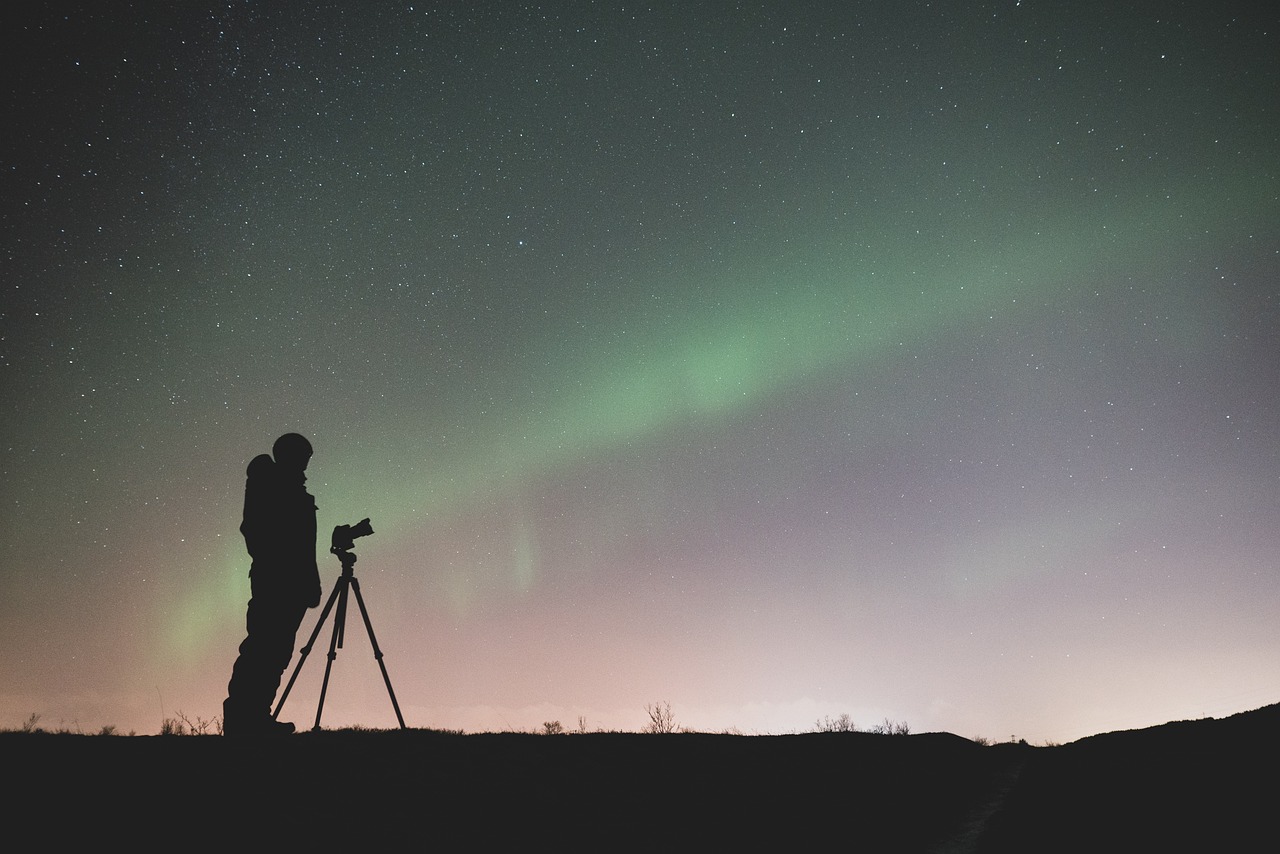This article delves into the increasing trend of adventure filmmakers opting for action cameras instead of traditional DSLRs. With their unique features and advantages, action cameras are tailored to meet the demands of dynamic and unpredictable shooting environments, making them an ideal choice for capturing thrilling moments.
What Makes Action Cameras Ideal for Adventure Filmmaking?
Action cameras are designed with compactness and lightweight features, making them easy to handle during high-energy activities. Their rugged build ensures they can withstand harsh conditions, which is essential for filmmakers who often find themselves in challenging environments. Unlike DSLRs, action cameras are built to be durable and waterproof, allowing filmmakers to shoot in rain, snow, or underwater without fear of damaging their equipment.
How Do Action Cameras Enhance Portability?
The compact design of action cameras allows filmmakers to carry them effortlessly. Their lightweight nature ensures that they don’t add unnecessary bulk during outdoor adventures, making them a preferred choice for on-the-go shooting. This portability is crucial when filming in remote locations where every ounce matters.
Are Action Cameras More Durable Than DSLRs?
Built to withstand extreme conditions, action cameras often come with rugged casings and waterproof features. This durability is crucial for adventure filmmakers who shoot in unpredictable environments. Many action cameras are also designed to endure shocks and vibrations, ensuring they continue to function even in the most demanding situations.
What Advanced Features Do Modern Action Cameras Offer?
Today’s action cameras boast high-resolution video, advanced stabilization technology, and various shooting modes. These features provide filmmakers with the versatility needed to capture stunning footage in diverse conditions. For instance, features like slow-motion capture and time-lapse photography enable unique storytelling techniques that can elevate the quality of the final product.
How Do Action Cameras Simplify Filmmaking?
With user-friendly interfaces and automated settings, action cameras streamline the filmmaking process. This simplicity allows filmmakers to focus on creativity rather than technical complexities, especially in fast-paced scenarios. Filmmakers can quickly adjust settings or switch modes without missing a moment of action.
Can Action Cameras Compete with DSLRs in Image Quality?
While DSLRs have traditionally been known for superior image quality, advancements in action camera technology have significantly closed this gap. Many modern action cameras now offer 4K video and exceptional low-light performance, enabling them to produce high-quality footage that meets professional standards.
What Are the Best Action Cameras for Filmmakers?
- GoPro Hero Series: Known for its versatility and user-friendly design.
- DJI Osmo Action: Offers superior stabilization and dual screens for easy framing.
- Insta360 One R: Features a modular design for various shooting styles.
How Do Action Cameras Facilitate Unique Angles and Perspectives?
The compact size and versatility of action cameras allow filmmakers to capture unique angles and perspectives that would be challenging with larger DSLR setups. They can be mounted on helmets, drones, or even placed in tight spaces, enhancing the storytelling aspect of their films.
What Role Does Stabilization Play in Action Camera Footage?
Advanced stabilization technologies in action cameras, such as electronic image stabilization (EIS), significantly reduce shaky footage. This ensures smooth and professional-looking results even during high-motion activities, which is crucial for maintaining viewer engagement.
How Do Action Cameras Integrate with Other Filmmaking Gear?
Action cameras can easily integrate with various accessories and mounts, expanding their usability. This compatibility allows filmmakers to create dynamic shots and enhance their storytelling techniques. From gimbals to tripods, the options are virtually limitless.
What Are the Limitations of Using Action Cameras?
Despite their advantages, action cameras have limitations, such as battery life and sensor size. Understanding these drawbacks helps filmmakers make informed choices based on their specific needs and shooting conditions. For instance, extended shooting sessions may require additional batteries or charging solutions.
What Is the Future of Action Cameras in Filmmaking?
As technology continues to evolve, action cameras are likely to become even more advanced. Innovations in image processing and connectivity will offer filmmakers new opportunities for creativity and expression in adventure filmmaking, potentially reshaping the industry landscape.
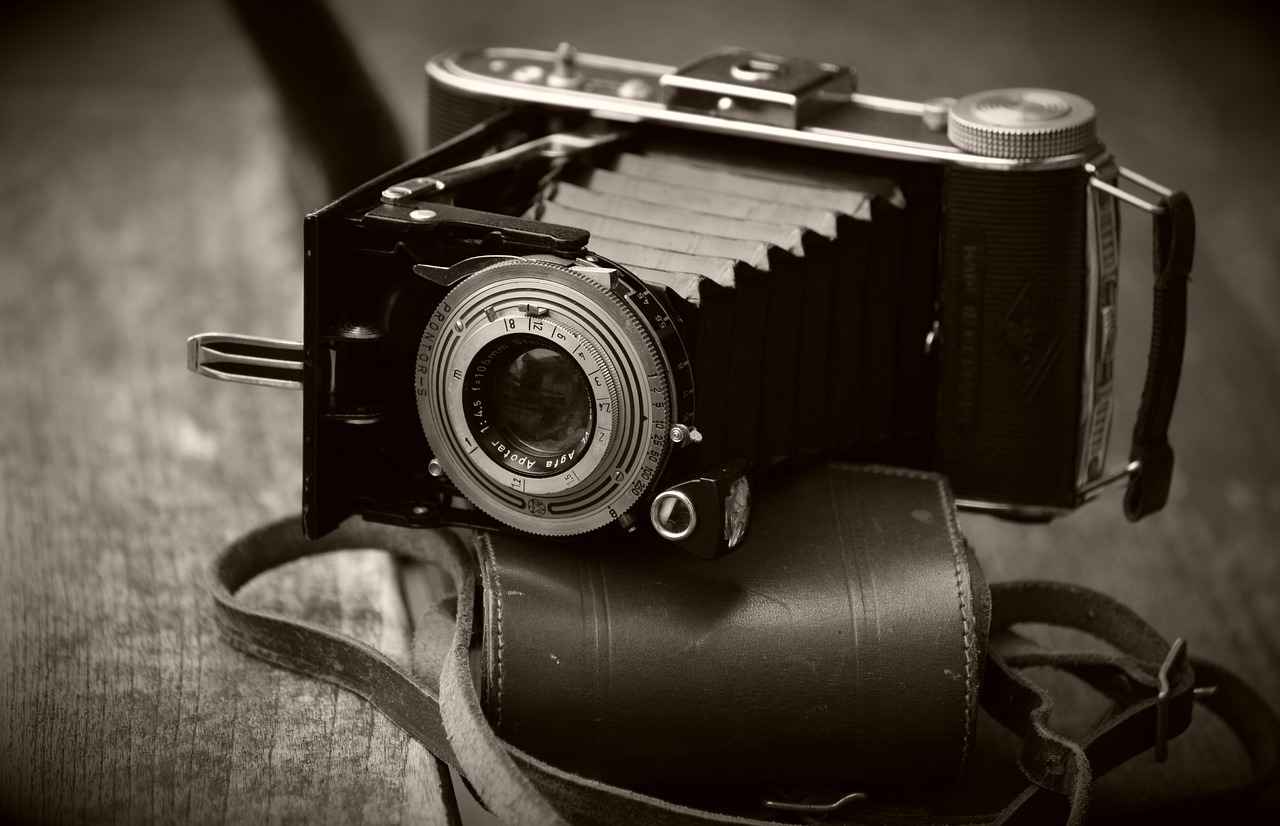
What Makes Action Cameras Ideal for Adventure Filmmaking?
In the realm of adventure filmmaking, action cameras have emerged as a game-changer. Their compact size, lightweight design, and remarkable durability make them the go-to choice for capturing thrilling moments. Unlike traditional DSLRs, action cameras are engineered specifically for high-energy activities, allowing filmmakers to document their adventures without the burden of heavy equipment.
Action cameras are not just smaller versions of traditional cameras; they are specially designed to meet the demands of filmmakers in extreme conditions. Their rugged construction ensures they can endure harsh environments, from underwater filming to high-altitude shots. This durability is essential for adventure filmmakers who often find themselves in unpredictable situations.
- Compact Design: The small footprint of action cameras allows for easy mounting on helmets, bikes, or even drones, enabling a variety of shooting angles that enhance storytelling.
- Lightweight: Weighing significantly less than DSLRs, action cameras allow filmmakers to travel light, which is especially beneficial during long hikes or expeditions.
- Durability: With features like waterproof casings and shock resistance, action cameras are built to withstand the rigors of adventure filmmaking.
The portability of action cameras cannot be overstated. Their lightweight nature ensures that filmmakers can carry multiple units without feeling weighed down. This is particularly advantageous during long shoots, where every ounce counts. Furthermore, the ability to easily attach these cameras to various surfaces means that filmmakers can capture shots that would be impossible with larger setups.
When it comes to durability, action cameras often outperform DSLRs. Built to withstand the elements, many models are waterproof and can function in extreme temperatures. This resilience is crucial for filmmakers who shoot in locations where traditional cameras might be at risk of damage. For instance, a filmmaker shooting a surfing documentary can confidently use an action camera without worrying about water damage.
Today’s action cameras are equipped with an array of advanced features that enhance their functionality. They offer high-resolution video, often up to 4K, and advanced stabilization technologies that minimize shaky footage. These features provide filmmakers with the flexibility to shoot in various conditions, ensuring high-quality results regardless of the environment.
One of the standout advantages of action cameras is their user-friendly interfaces. Many models come with automated settings that allow filmmakers to focus on their creative vision rather than technical details. This simplicity is particularly beneficial in fast-paced scenarios where quick adjustments are necessary.
While DSLRs have long been revered for their image quality, advancements in action camera technology have significantly narrowed this gap. Many modern action cameras now feature large sensors and advanced optics, enabling them to produce footage that meets professional standards. This evolution has made them a viable alternative for filmmakers looking to capture stunning visuals without the bulk of traditional cameras.
Several brands offer action cameras tailored specifically for filmmakers. Popular options include:
- GoPro: Known for its robust features and versatility.
- DJI: Offers advanced stabilization and aerial capabilities.
- Insta360: Renowned for its 360-degree filming options.
The compact size of action cameras allows filmmakers to explore unique angles that would be challenging with larger DSLRs. Whether mounted on a skateboard or attached to a drone, these cameras enable creative storytelling by capturing dynamic perspectives that engage viewers.
Advanced stabilization technologies, such as electronic image stabilization (EIS), play a crucial role in ensuring smooth footage. This is particularly important during high-motion activities, where traditional cameras might struggle to maintain clarity. The result is professional-looking footage that enhances the overall quality of the film.
Action cameras are highly compatible with a range of accessories and mounts, allowing filmmakers to expand their creative possibilities. Whether using gimbals for stabilization or various mounts for unique angles, the integration of action cameras with other gear enhances the storytelling experience.
Despite their many advantages, action cameras do have limitations. Battery life can be shorter compared to DSLRs, and sensor size may affect low-light performance. Understanding these drawbacks is essential for filmmakers to make informed decisions based on their specific needs and shooting conditions.
As technology continues to evolve, action cameras are set to become even more advanced, offering filmmakers new opportunities for creativity. With ongoing innovations, these cameras may reshape the landscape of adventure filmmaking, making them indispensable tools for storytellers worldwide.
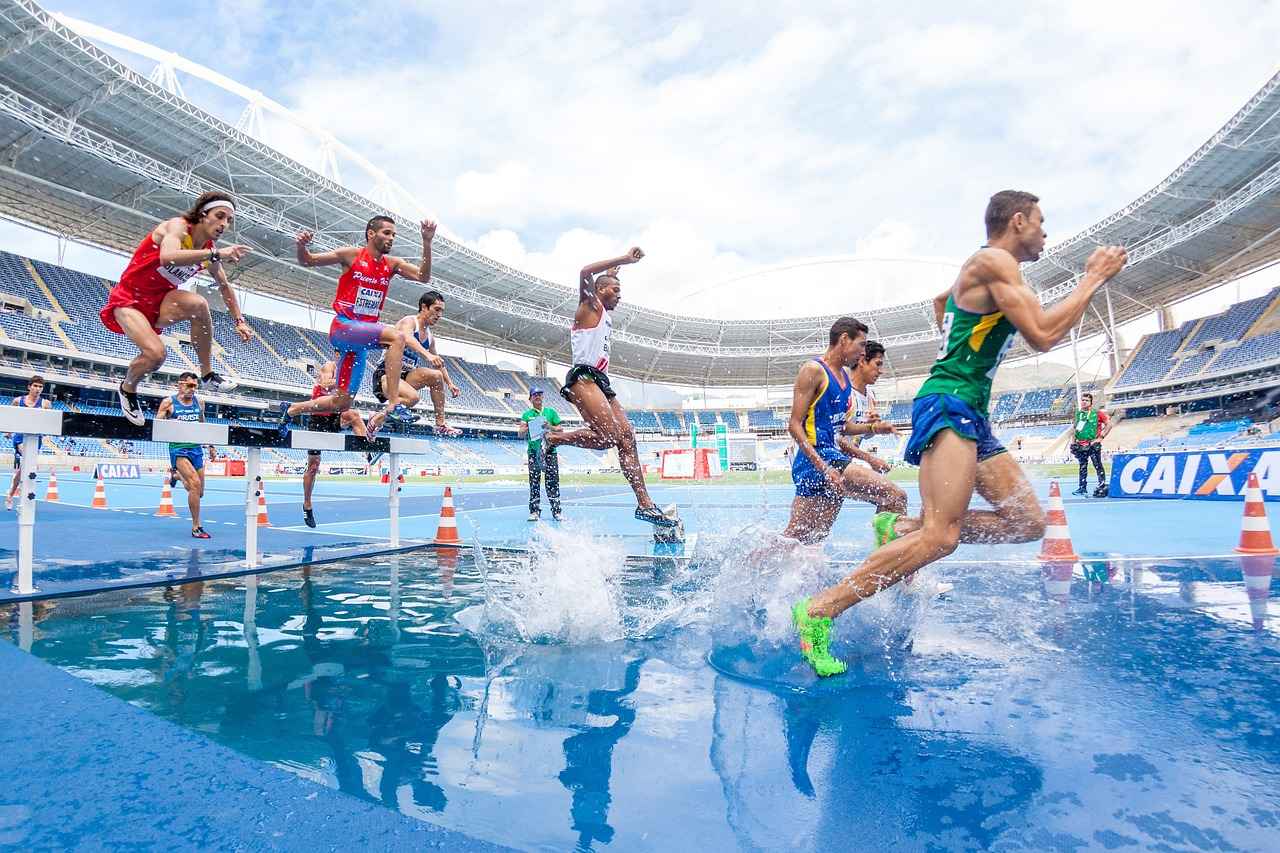
How Do Action Cameras Enhance Portability?
In the fast-paced world of adventure filmmaking, portability is key. Filmmakers often find themselves in dynamic environments where every ounce of gear counts. This is where action cameras shine, offering a compact and lightweight alternative to traditional filming equipment. The design of these cameras is specifically tailored to meet the demands of outdoor shooting, making them a go-to choice for those who thrive on adventure.
The compact design of action cameras allows filmmakers to carry them effortlessly. Weighing significantly less than DSLRs, these cameras do not add unnecessary bulk during outdoor excursions. This lightweight nature makes them ideal for activities such as hiking, biking, or extreme sports, where agility and ease of movement are crucial. Filmmakers can easily slip an action camera into a pocket or attach it to a backpack, ensuring that they are always ready to capture spontaneous moments.
In addition to their size, action cameras often come equipped with a variety of mounts and accessories that enhance their portability. Versatile mounting options allow filmmakers to secure cameras to helmets, surfboards, or even drones, providing unique perspectives that larger cameras cannot achieve. This flexibility not only facilitates creative shooting angles but also minimizes the need for cumbersome tripods or stabilizers, further simplifying the filming process.
Moreover, the durability of action cameras complements their portable design. Many models are built to withstand harsh conditions, featuring waterproof and shockproof casings. This resilience means that filmmakers can take their equipment into rugged terrains or unpredictable weather without fear of damage, allowing for a more adventurous shooting experience.
As technology advances, the functionality of action cameras continues to improve. Modern devices offer features like high-resolution video and advanced stabilization, all while maintaining their lightweight and compact form. This combination of portability and performance makes them an attractive option for filmmakers who need to travel light without sacrificing quality.
Filmmakers also appreciate the ease of use that comes with action cameras. With user-friendly interfaces and automated settings, these cameras allow for quick adjustments on the fly. This is particularly beneficial in fast-paced environments where time is of the essence. The ability to grab the camera and start shooting without extensive setup is a significant advantage that enhances the overall filmmaking experience.
In conclusion, the portability of action cameras is a game-changer for adventure filmmakers. Their compact design, lightweight nature, and durability make them ideal for capturing high-energy activities without the burden of traditional gear. As filmmakers continue to seek innovative ways to tell their stories, action cameras will undoubtedly remain at the forefront of portable filmmaking solutions.
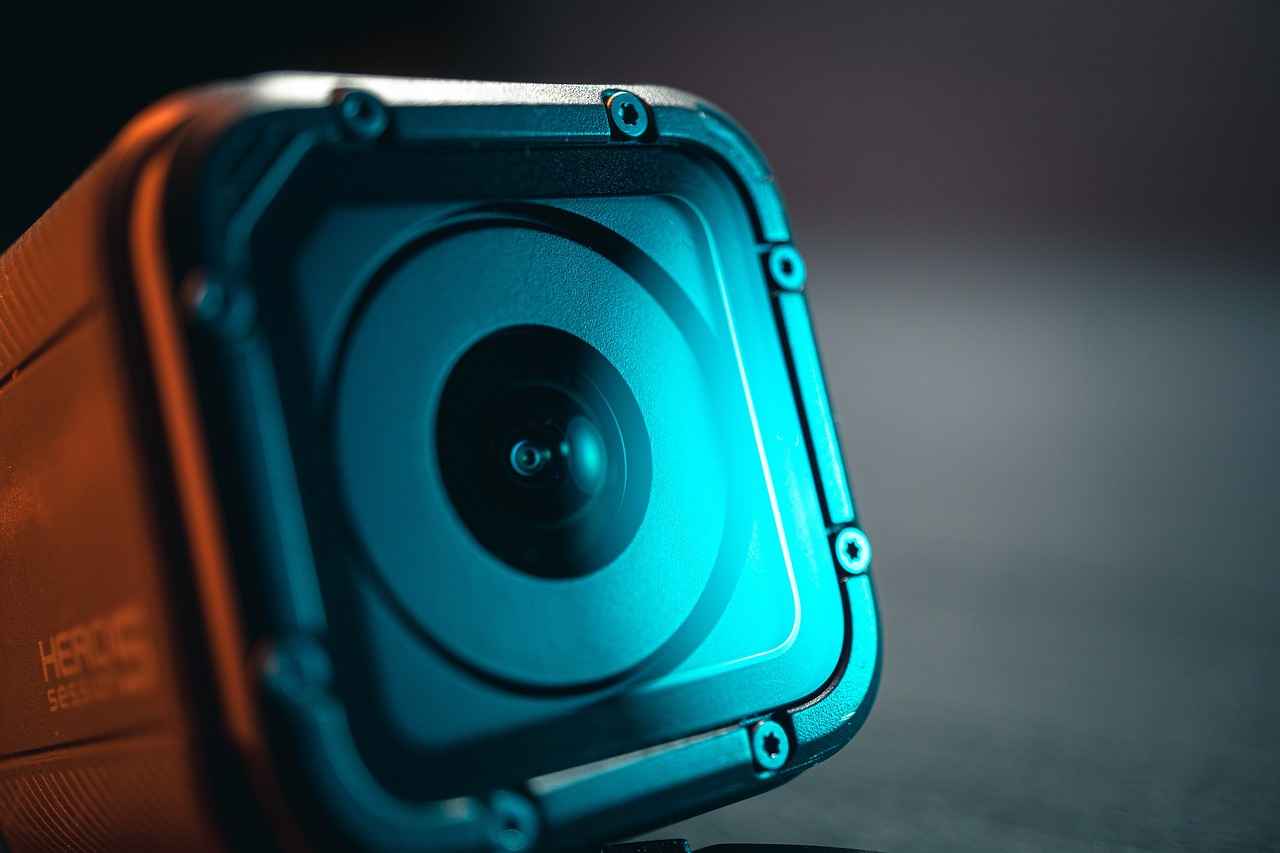
Are Action Cameras More Durable Than DSLRs?
When it comes to adventure filmmaking, the durability of equipment is paramount. This is where action cameras truly shine, often outpacing traditional DSLRs in terms of resilience and adaptability. Built to withstand extreme conditions, action cameras are engineered for adventure seekers who frequently find themselves in unpredictable environments.
Action cameras are designed with rugged casings that protect them from impacts, drops, and harsh weather conditions. Many models come with waterproof features, allowing filmmakers to shoot underwater or in heavy rain without worrying about damaging their gear. This level of durability is crucial for adventure filmmakers who often shoot in environments where traditional cameras would be at risk.
Whether it’s the icy winds of a mountain peak or the scorching sun of a desert, action cameras are built to operate in a wide range of temperatures. Unlike DSLRs, which can suffer from overheating or freezing, many action cameras maintain their performance, ensuring that filmmakers can capture every moment without interruption.
Another significant advantage of action cameras is their resistance to dust and sand. Many models come with sealed designs that prevent particles from entering the camera body, making them ideal for shooting in desert or beach environments. This feature is particularly beneficial for filmmakers who want to document their adventures without the fear of damaging their equipment.
While battery life is a concern for both action cameras and DSLRs, action cameras often feature energy-efficient designs that help extend usage in challenging conditions. Some models allow for external battery packs or have swappable batteries, which can be a lifesaver during long shoots in remote locations.
Repairing a DSLR can often be more complicated and costly compared to action cameras. Due to their simpler construction and more affordable price points, action cameras are generally easier and less expensive to repair or replace. This makes them a practical choice for adventure filmmakers who may be prone to accidents.
The durability of action cameras means that filmmakers can focus on capturing stunning footage without the constant worry of equipment failure. This peace of mind allows for more creative freedom, enabling filmmakers to tackle challenging shots or risky maneuvers that would be daunting with more fragile gear.
Yes, many professional filmmakers are now incorporating action cameras into their workflows. With advancements in technology, these cameras can produce high-quality footage that meets industry standards. Their durability only adds to their appeal, allowing professionals to shoot in environments that would be impossible with traditional cameras.
While action cameras excel in durability, they do have limitations, such as sensor size and low-light performance. Filmmakers should consider these factors when choosing their gear. However, for adventure filmmaking, the benefits often outweigh these drawbacks, making action cameras a favored choice.
In summary, the ruggedness and durability of action cameras make them an excellent alternative to DSLRs for adventure filmmakers. Their ability to withstand extreme conditions, coupled with their compact design and ease of use, positions them as a go-to choice for capturing breathtaking moments in the great outdoors.
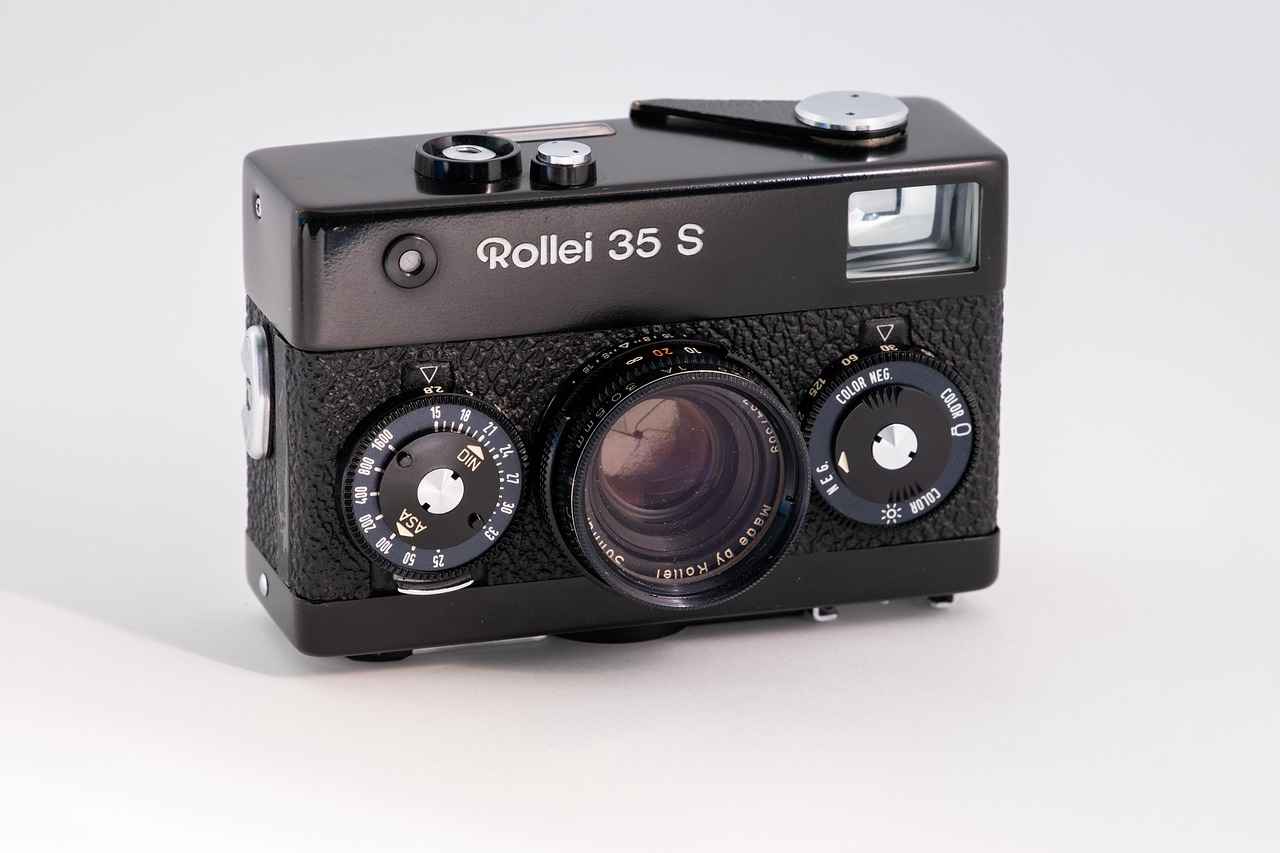
What Advanced Features Do Modern Action Cameras Offer?
In recent years, action cameras have become indispensable tools for adventure filmmakers, thanks to their innovative features and cutting-edge technology. Modern action cameras are designed to meet the demands of dynamic shooting environments, making them an excellent choice for capturing breathtaking visuals.
Today’s action cameras are equipped with an array of advanced features that significantly enhance their functionality and usability. Here are some of the standout capabilities:
- High-Resolution Video: Many action cameras can shoot in 4K resolution or higher, providing filmmakers with stunningly clear and detailed footage. This high resolution is essential for creating cinematic quality videos, even in fast-paced scenarios.
- Advanced Stabilization Technology: Technologies such as electronic image stabilization (EIS) and optical image stabilization (OIS) are now standard in many models. These features help to minimize camera shake, ensuring smooth and professional-looking footage, even during intense motion.
- Multiple Shooting Modes: Modern action cameras offer a variety of shooting modes, including time-lapse, slow motion, and burst shooting. These modes allow filmmakers to experiment creatively and capture unique perspectives that enhance storytelling.
- Wide Field of View: With ultra-wide lenses, action cameras provide a broader perspective, allowing filmmakers to capture more of the environment. This feature is particularly useful for adventure sports, where the action often happens in expansive settings.
- Waterproof and Rugged Design: Built to withstand harsh conditions, many action cameras are waterproof and shockproof. This durability is crucial for filmmakers who shoot in unpredictable environments, such as underwater or during extreme sports.
- Live Streaming Capabilities: Some action cameras now come with built-in live streaming options, enabling filmmakers to share their adventures in real-time. This feature is perfect for engaging audiences and creating interactive experiences.
- Voice Control: Voice-activated controls allow filmmakers to operate the camera hands-free, which is particularly beneficial during high-energy activities where manual operation may not be feasible.
- Mobile App Integration: Many action cameras can connect to mobile apps, enabling filmmakers to edit footage, adjust settings, and share content directly from their smartphones. This integration streamlines the workflow and allows for quick adjustments on the go.
These advanced features not only enhance the quality of the footage captured but also provide filmmakers with the versatility needed to adapt to various shooting conditions. Whether filming in the mountains, underwater, or during high-speed activities, modern action cameras are designed to deliver exceptional results.
As technology continues to evolve, we can expect even more innovative features in future action camera models. This ongoing development will further solidify their place as essential tools for adventure filmmakers, providing them with the means to tell their stories in captivating ways.
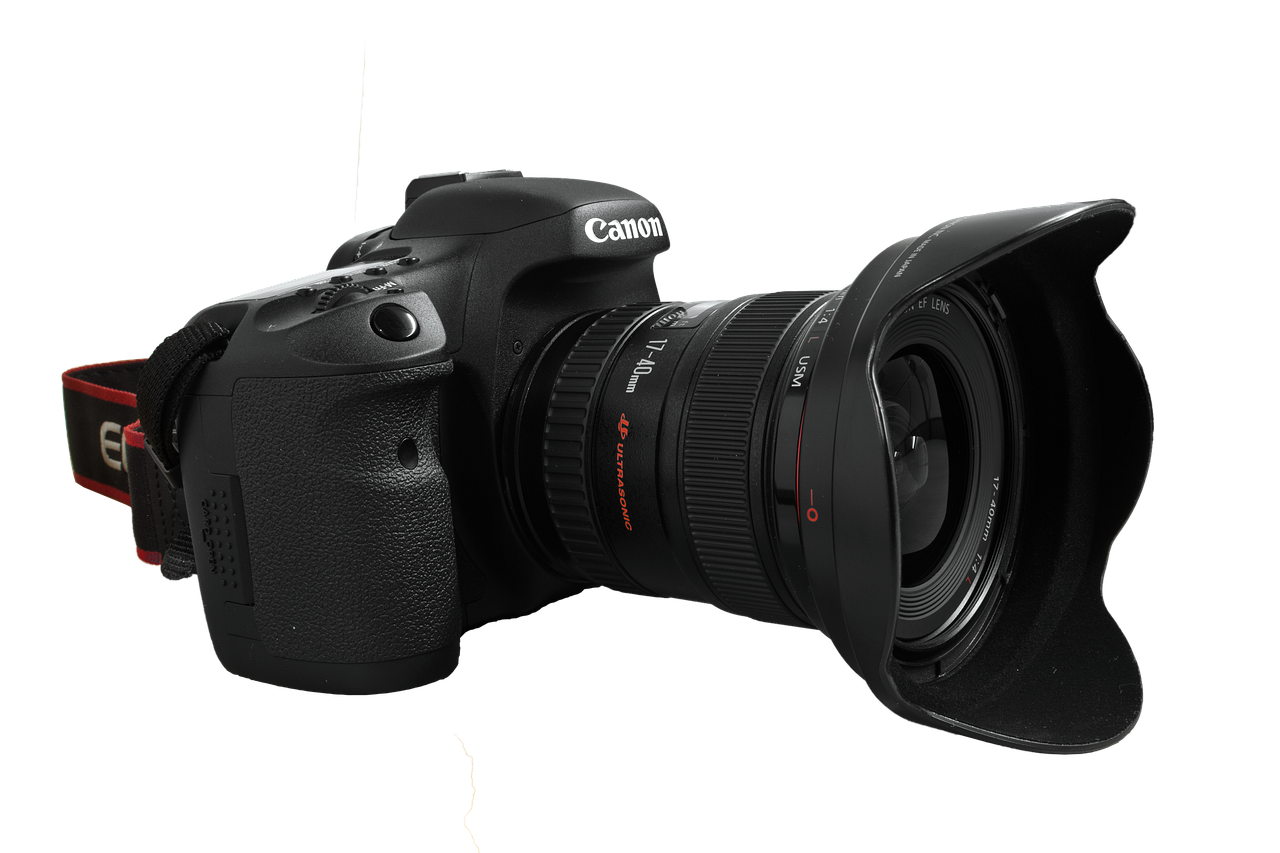
How Do Action Cameras Simplify Filmmaking?
In the ever-evolving world of filmmaking, action cameras have emerged as a game-changer, particularly for those engaged in adventure filmmaking. One of the most significant advantages they offer is their ability to simplify the filmmaking process. This article delves into how action cameras streamline production, allowing filmmakers to concentrate on their creativity rather than getting bogged down by technical details.
Action cameras are designed with user-friendly interfaces that cater to both novice and experienced filmmakers. The intuitive controls and menu systems are straightforward, making it easy to navigate through various settings quickly. This usability is particularly beneficial in fast-paced environments where time is of the essence. Whether capturing a thrilling mountain bike descent or a serene underwater shot, action cameras allow users to make adjustments with minimal distraction.
Another remarkable feature of action cameras is their automated settings. These cameras often come equipped with modes such as auto-exposure, auto-white balance, and even scene detection technology. This automation reduces the need for manual adjustments, enabling filmmakers to focus on capturing the moment rather than fiddling with settings. For example, when shooting in varying light conditions, the camera can automatically adjust to ensure optimal exposure, thus enhancing the overall quality of the footage.
In the realm of adventure filmmaking, the ability to react quickly is crucial. Action cameras minimize technical complexities that often accompany traditional filmmaking equipment. By eliminating the need for extensive setups and adjustments, filmmakers can concentrate on storytelling and capturing authentic moments. This is especially vital in dynamic scenarios like extreme sports, where every second counts.
With the technical aspects simplified, filmmakers can unleash their creativity. The freedom to experiment with different angles and perspectives becomes more accessible. Action cameras are compact and lightweight, allowing for unique mounting options that would be cumbersome with larger equipment. Filmmakers can attach them to helmets, surfboards, or even drones, providing a plethora of creative angles that enhance the narrative of their projects.
Portability is another significant factor that contributes to the simplification of filmmaking. Action cameras are designed to be lightweight and compact, making them easy to carry during adventures. This portability allows filmmakers to seize spontaneous opportunities without the burden of heavy gear. Whether hiking through rugged terrain or navigating crowded urban environments, the ease of transport ensures that filmmakers are always ready to capture the perfect shot.
Modern action cameras often come with features that allow for seamless integration with smartphones and other devices. This connectivity enables filmmakers to control their cameras remotely, preview shots, and even edit footage on the go. Such integration further simplifies the workflow, allowing for quick adjustments and immediate feedback, which is invaluable in fast-paced shooting scenarios.
In conclusion, action cameras have revolutionized the way filmmakers approach their craft. By simplifying the technical aspects of filmmaking, these devices empower creators to focus on their artistic vision. With user-friendly interfaces, automated settings, and exceptional portability, action cameras are not just tools but essential companions for adventure filmmakers looking to capture their stories with ease and creativity.
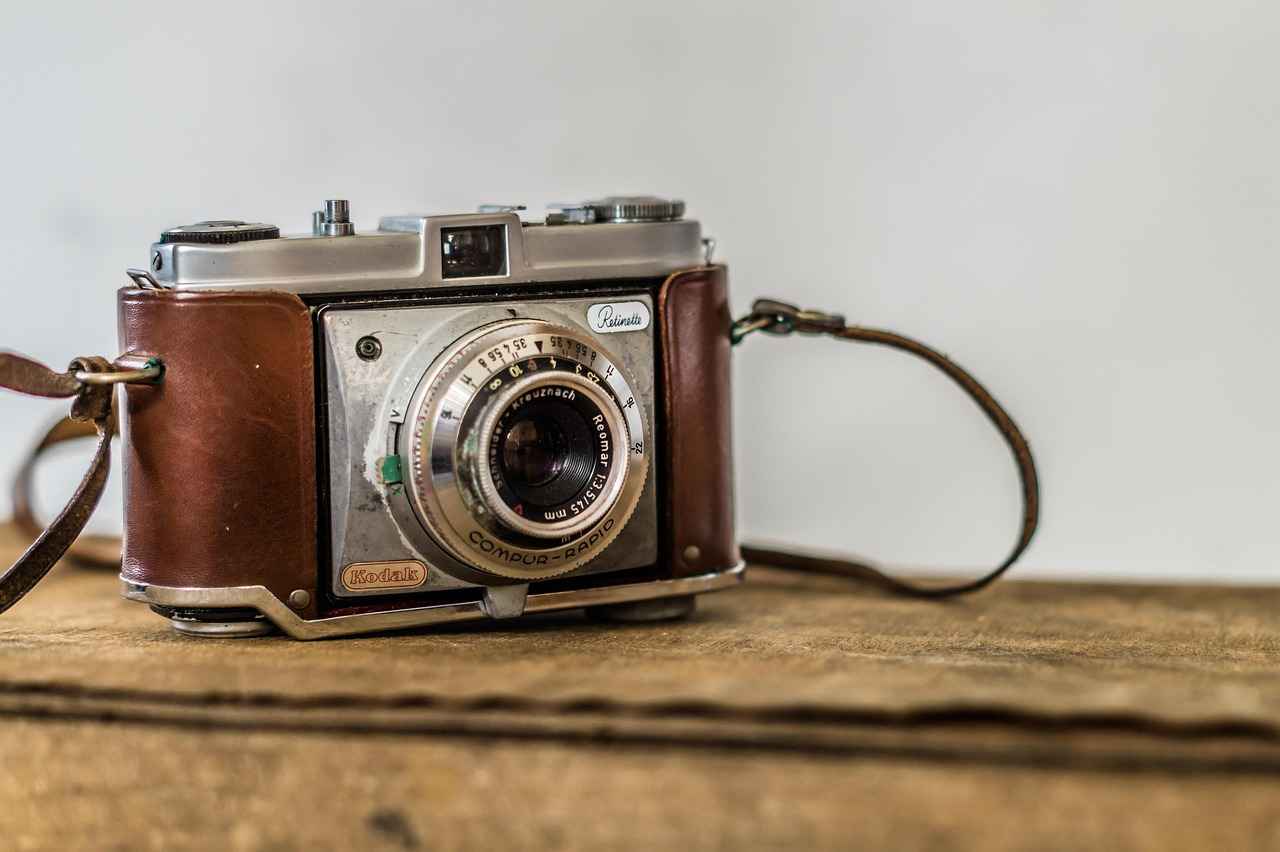
Can Action Cameras Compete with DSLRs in Image Quality?
As technology continues to evolve, the debate over whether action cameras can truly compete with DSLRs in terms of image quality has become increasingly relevant. While DSLRs have long been regarded as the gold standard for professional photography and videography, recent advancements in action camera technology have significantly narrowed this gap. This article delves into the factors that contribute to the impressive image quality of modern action cameras and how they stand up against traditional DSLRs.
Image quality in cameras is influenced by several factors, including sensor size, lens quality, and processing capabilities. DSLRs typically feature larger sensors, which allow for better light capture and improved dynamic range. However, action cameras have made substantial strides in sensor technology, with many now incorporating high-quality sensors that can produce stunning results even in challenging lighting conditions.
DSLRs usually come equipped with APS-C or full-frame sensors, which provide superior image quality, especially in low-light situations. In contrast, most action cameras have smaller sensors. However, advancements in image processing algorithms and sensor technology have allowed action cameras to produce images that are sharper and more vibrant than ever before. These innovations have made it possible for action cameras to deliver high-quality footage that meets the standards of professional filmmakers.
Another critical aspect of image quality is the lens. DSLRs benefit from a wide array of interchangeable lenses, allowing photographers to select the perfect lens for their specific needs. Action cameras, on the other hand, typically feature fixed lenses with wide-angle capabilities. While this limits versatility, the wide field of view can enhance the storytelling aspect of adventure films, capturing more of the environment in a single shot.
One of the standout features of modern action cameras is their advanced image stabilization technology. Many action cameras utilize electronic image stabilization (EIS) to smooth out footage, significantly reducing the effects of shaky hands or motion. This stabilization technology is crucial for adventure filmmakers who often shoot in dynamic environments. In contrast, while DSLRs may offer optical stabilization, they generally do not match the level of stabilization found in action cameras.
High Dynamic Range (HDR) imaging is essential for capturing details in both bright and dark areas of a scene. Some contemporary action cameras now support HDR video, allowing filmmakers to achieve a more balanced exposure. While DSLRs excel in this area due to their larger sensors and advanced settings, action cameras are closing the gap with features that enhance their ability to capture a wider range of tones.
Despite their advancements, action cameras do have limitations compared to DSLRs. The smaller sensor size can lead to challenges with depth of field and low-light performance, resulting in grainier images in darker settings. Additionally, the fixed lenses restrict creative options, which can be a drawback for some filmmakers.
With their growing capabilities, many action cameras are now deemed suitable for professional use. Brands like GoPro and DJI have developed models that deliver exceptional image quality, making them viable alternatives for adventure filmmakers. As technology progresses, it is likely that action cameras will continue to enhance their image quality, further challenging the dominance of DSLRs.
In conclusion, while DSLRs have traditionally been the preferred choice for high-quality imaging, advancements in action camera technology have made them formidable competitors. With their compact design, advanced stabilization, and improving image quality, action cameras are increasingly becoming the go-to option for adventure filmmakers looking to capture stunning footage in dynamic environments.

What Are the Best Action Cameras for Filmmakers?
In the ever-evolving world of filmmaking, action cameras have emerged as a game-changer, particularly for adventure filmmakers seeking to capture dynamic moments. With a plethora of options available, it’s essential to understand which action cameras stand out in the market. This article delves into the best action cameras for filmmakers, focusing on their unique features, usability, and suitability for various filming styles.
- GoPro HERO Series: Renowned for its compact design and exceptional video quality, the GoPro HERO series is a top choice among filmmakers. With features like HyperSmooth stabilization and 4K video capability, it excels in capturing smooth footage during high-action scenes.
- DJI Osmo Action: This camera offers dual screens, allowing for easy framing of shots, which is particularly useful for vloggers and filmmakers. Its RockSteady stabilization technology ensures that even the most intense movements are captured smoothly.
- Insta360 ONE R: Known for its modular design, the Insta360 ONE R allows filmmakers to switch between a 360-degree camera and a traditional action camera. This versatility makes it ideal for capturing unique perspectives and immersive experiences.
- Sony FDR-X3000: With its balanced optical steady shot, this camera is perfect for filmmakers who prioritize image stabilization. It also offers 4K recording and a wide-angle lens, making it suitable for various shooting environments.
- Akaso Brave 7 LE: A budget-friendly option, the Akaso Brave 7 LE does not compromise on features. It offers dual screens, 4K video recording, and is waterproof, making it ideal for adventure enthusiasts.
When selecting an action camera, filmmakers should consider several key features:
- Video Quality: Look for cameras that support at least 4K resolution to ensure high-quality footage.
- Stabilization Technology: Advanced stabilization technologies like Electronic Image Stabilization (EIS) significantly enhance the quality of action shots.
- Battery Life: Longer battery life is crucial for extended shooting sessions, especially in remote locations.
- Durability: Cameras that are waterproof and shockproof are essential for adventure filming in unpredictable conditions.
- Mounting Options: Versatile mounting options allow filmmakers to attach cameras to various surfaces, enabling creative shooting angles.
Action cameras are designed to be versatile and user-friendly, allowing filmmakers to focus on creativity rather than technical challenges. Their compact size makes it easy to capture unique angles and perspectives that traditional cameras may not accommodate. Additionally, many action cameras offer a range of shooting modes, including time-lapse and slow-motion, providing filmmakers with the tools to enhance their storytelling.
The price of action cameras can vary significantly based on features and brand. High-end models like the GoPro HERO series can range from $300 to $500, while mid-range options like the DJI Osmo Action typically fall between $200 and $300. Budget-friendly cameras, such as the Akaso Brave 7 LE, can be found for under $150, making them accessible for filmmakers at any level.
As technology advances, action cameras are becoming increasingly capable, often rivaling traditional DSLRs in terms of image quality and functionality. Their lightweight and durable design, combined with impressive video capabilities, make them an attractive option for adventure filmmakers who need to capture high-quality footage in challenging environments. With brands like GoPro, DJI, and Insta360 leading the charge, the market continues to evolve, offering filmmakers innovative tools to tell their stories.
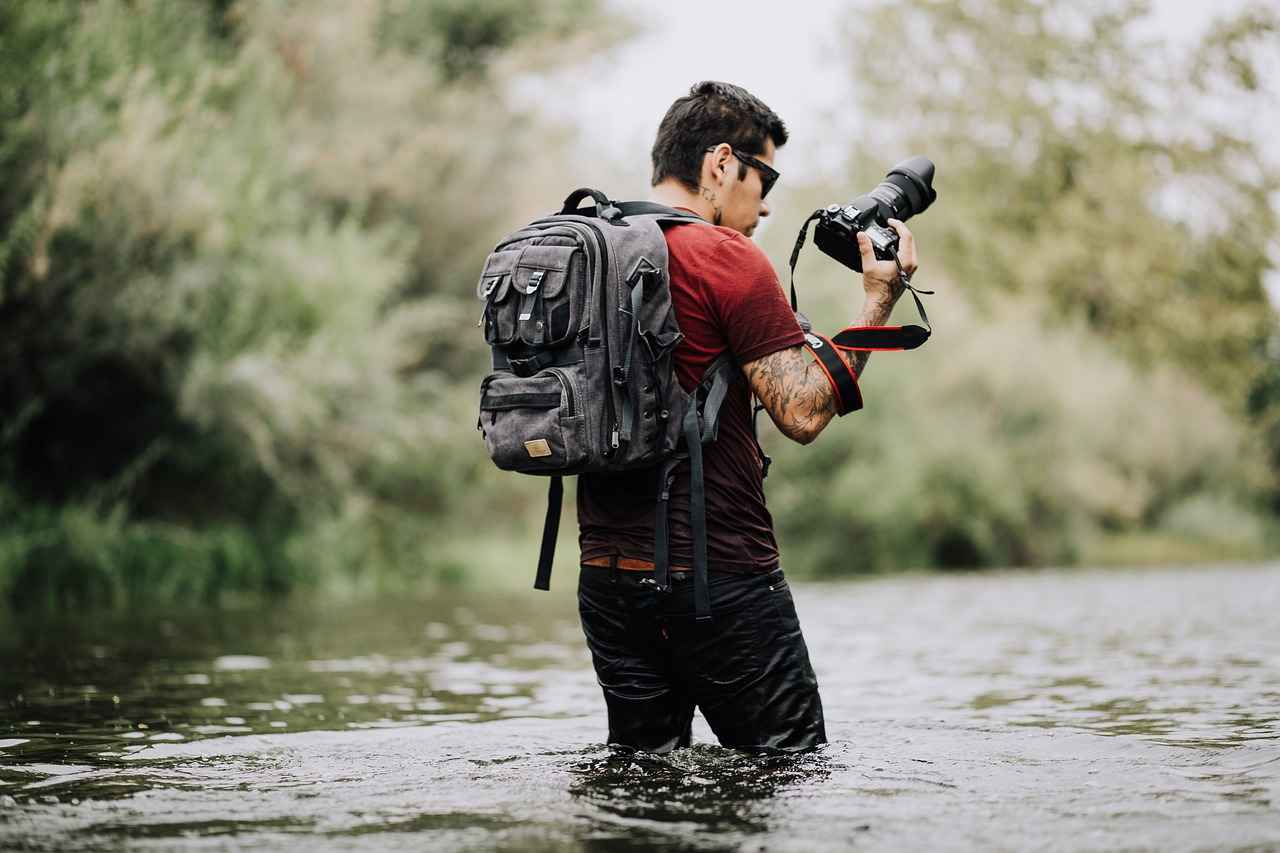
How Do Action Cameras Facilitate Unique Angles and Perspectives?
Action cameras have revolutionized the way filmmakers approach storytelling, particularly in adventure filmmaking. Their compact size and versatile functionality enable creators to explore angles and perspectives that would be nearly impossible with traditional DSLR cameras. This article delves into how action cameras facilitate unique visual storytelling through their innovative design and features.
Unique angles can dramatically enhance the narrative of a film. By capturing scenes from unexpected perspectives, filmmakers can evoke emotions, create tension, and engage viewers in a way that standard shots often cannot. Action cameras, designed for flexibility, allow for these creative opportunities.
- Compact Design: The small size of action cameras allows them to be mounted in a variety of locations, such as on helmets, bikes, or even drones. This flexibility opens up new possibilities for dynamic shots.
- Wide-Angle Lenses: Many action cameras come equipped with wide-angle lenses, enabling filmmakers to capture expansive scenes. This feature is particularly useful for showcasing the vastness of landscapes or the intensity of action sequences.
- Lightweight: Their lightweight nature means that filmmakers can carry multiple cameras without being burdened. This ease of transport allows for quick changes in setup, which is crucial in fast-paced environments.
Filmmakers can experiment with creative angles such as low shots, high shots, and even 360-degree views. For instance, an action camera mounted on a skateboard can provide a thrilling perspective of the rider’s experience, making viewers feel as though they are part of the action. This immersive quality is difficult to replicate with larger DSLRs.
Action cameras are built to withstand harsh conditions, making them perfect for outdoor adventures. Their ability to resist water, dust, and impact allows filmmakers to capture unique perspectives in environments that would be risky for traditional cameras. Whether filming underwater or during extreme sports, action cameras can be placed in challenging locations without fear of damage.
While action cameras have traditionally struggled in low-light scenarios compared to DSLRs, advancements in technology have improved their performance. Many modern action cameras now feature enhanced sensors and image processing capabilities, allowing for better low-light performance. This means filmmakers can capture unique angles even during dawn or dusk, broadening their storytelling potential.
The ease of use and quick setup of action cameras encourage spontaneity. Filmmakers can quickly switch between shots and angles without extensive preparation, allowing for a more organic filming process. This spontaneity can lead to unexpected and unique perspectives that enhance the overall narrative of the film.
A variety of accessories can further enhance the unique shooting capabilities of action cameras. From gimbals for stabilization to various mounts that allow for creative placements, these tools expand the possibilities for capturing unique angles. For example, using a chest mount can provide a first-person view, immersing the audience in the experience.
Filmmakers leverage the unique angles provided by action cameras to create compelling narratives. By integrating shots from different perspectives, they can build tension, highlight character emotions, and create a more engaging experience for viewers. The ability to capture dynamic footage enhances the storytelling aspect, making action cameras invaluable tools for modern filmmakers.

What Role Does Stabilization Play in Action Camera Footage?
In the fast-paced world of adventure filmmaking, stabilization is a crucial element that can make or break the quality of footage captured. Action cameras have revolutionized how filmmakers approach dynamic shooting environments, primarily due to their advanced stabilization technologies. This article delves into the significance of stabilization in action camera footage, highlighting key technologies and their impact on the overall viewing experience.
Electronic Image Stabilization (EIS) is a groundbreaking technology that uses software algorithms to minimize camera shake. By analyzing the footage frame by frame, EIS compensates for unwanted movements, resulting in smoother video output. This is particularly beneficial during high-motion activities, such as mountain biking or surfing, where traditional stabilization methods may falter.
- Improved Viewing Experience: Smooth footage enhances the aesthetic quality of films, making them more enjoyable for viewers.
- Professional Quality: EIS allows amateur filmmakers to achieve professional-looking results without extensive post-production work.
- Versatility: With stabilization, filmmakers can shoot in various environments, from rugged terrains to high-speed scenarios, without worrying about shaky footage.
Action cameras typically employ a combination of stabilization technologies:
- Optical Image Stabilization (OIS): This method uses physical hardware, such as gyroscopes, to stabilize the lens during shooting.
- Digital Stabilization: Similar to EIS, this technique uses software to crop and adjust the frame, ensuring smooth results.
- Hybrid Stabilization: Some advanced models combine both OIS and EIS to maximize stabilization effects, providing filmmakers with the best of both worlds.
While DSLRs have traditionally been favored for their superior image quality, action cameras have closed the gap in stabilization technologies. The compact size of action cameras allows for innovative stabilization solutions that are often impractical for larger DSLR setups. This makes action cameras a preferred choice for filmmakers who prioritize mobility and ease of use.
Stabilization not only enhances the technical quality of footage but also influences the creative choices filmmakers can make. With reliable stabilization, filmmakers can experiment with unique angles and movements, such as:
- Low-angle shots: Capturing action from the ground level without the worry of shake.
- Fast pans: Quickly moving the camera while maintaining a smooth flow.
- Dynamic tracking shots: Following subjects in motion with clarity and precision.
While EIS and other stabilization methods significantly improve footage quality, they are not without limitations. For instance, heavy cropping can result in a loss of resolution, and extreme movements may still produce some level of shake. Additionally, stabilization technologies may struggle in low-light conditions, where noise can become more pronounced.
To make the most of stabilization technologies, filmmakers should consider the following tips:
- Use Compatible Settings: Ensure that the camera settings are optimized for stabilization, such as frame rate and resolution.
- Practice Smooth Movements: While stabilization will correct some shake, smooth camera movements will yield the best results.
- Post-Production Enhancements: Utilize editing software to further stabilize footage if necessary, especially for critical shots.
In summary, stabilization plays a vital role in enhancing the quality of action camera footage, making it an indispensable feature for adventure filmmakers. With technologies like EIS, filmmakers can capture breathtaking visuals that resonate with audiences, all while embracing the challenges of dynamic environments.
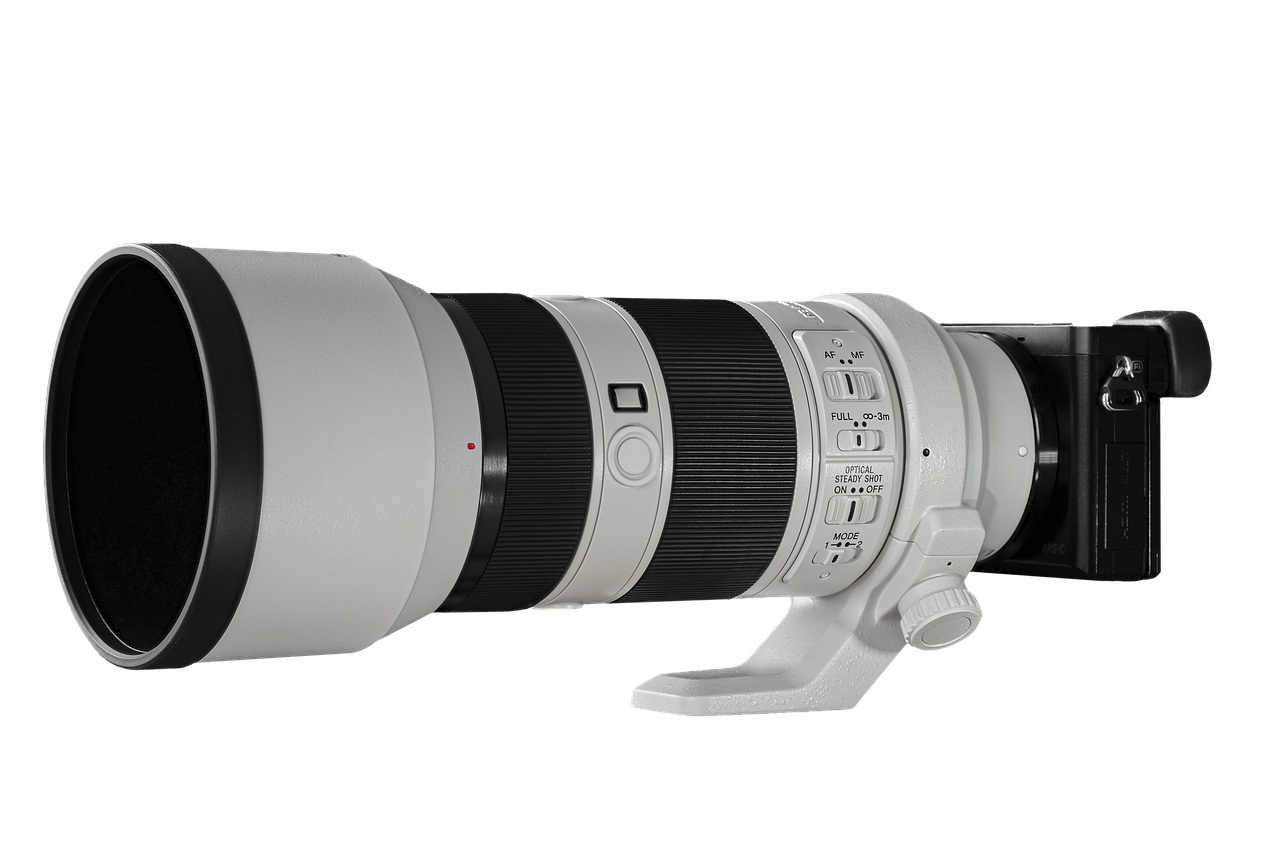
How Do Action Cameras Integrate with Other Filmmaking Gear?
Action cameras have revolutionized the way filmmakers approach their craft, particularly in dynamic and adventurous settings. One of the standout features that contribute to their popularity is their ability to integrate seamlessly with a variety of accessories and mounts. This compatibility not only enhances the usability of action cameras but also opens up a world of creative possibilities for filmmakers.
The ability to use action cameras with various accessories is crucial for filmmakers looking to capture dynamic shots. Accessories such as gimbals, tripods, and mounts allow for a greater range of motion and stability, enabling filmmakers to experiment with different angles and perspectives. For instance, using a chest mount can provide a first-person view that immerses the audience in the action, while a drone mount can capture breathtaking aerial shots.
- Mounts: Action cameras can be attached to helmets, bikes, cars, and even surfboards, allowing for unique perspectives that traditional cameras cannot achieve.
- Stabilizers: Gimbals and stabilizers help reduce shaky footage, ensuring smooth and professional-looking results during high-motion activities.
- Lighting Equipment: External lights can enhance visibility in low-light environments, improving the overall quality of the footage.
- Microphones: High-quality external microphones can be connected to capture clear audio, which is often a challenge in action filmmaking.
Integrating accessories with action cameras allows filmmakers to enhance their storytelling techniques. For example, using a 360-degree mount can create immersive experiences, allowing viewers to explore the environment from different angles. This level of engagement can significantly elevate the narrative, making the audience feel as if they are part of the adventure.
Absolutely! Many filmmakers are now incorporating action cameras into their professional setups. By using adapters and connectors, action cameras can easily integrate with larger camera rigs, enabling filmmakers to switch between different devices without losing the unique advantages that action cameras offer.
- Increased Flexibility: The ability to switch between different mounts and accessories allows filmmakers to adapt quickly to changing environments.
- Enhanced Creativity: Accessories provide filmmakers with tools to experiment with new angles and techniques, fostering creativity.
- Cost-Effectiveness: Action cameras and their accessories are often more affordable than traditional filmmaking gear, making them accessible for filmmakers on a budget.
When selecting accessories, filmmakers should consider their specific needs and the type of shots they wish to achieve. Researching compatibility and reading reviews can help in making informed choices. Additionally, testing different setups can lead to discovering unique combinations that enhance the filmmaking process.
In conclusion, the integration of action cameras with various accessories and mounts significantly expands their usability, allowing filmmakers to capture dynamic shots and enhance their storytelling techniques. This adaptability is one of the key reasons why action cameras are becoming a preferred tool for adventure filmmakers around the globe.
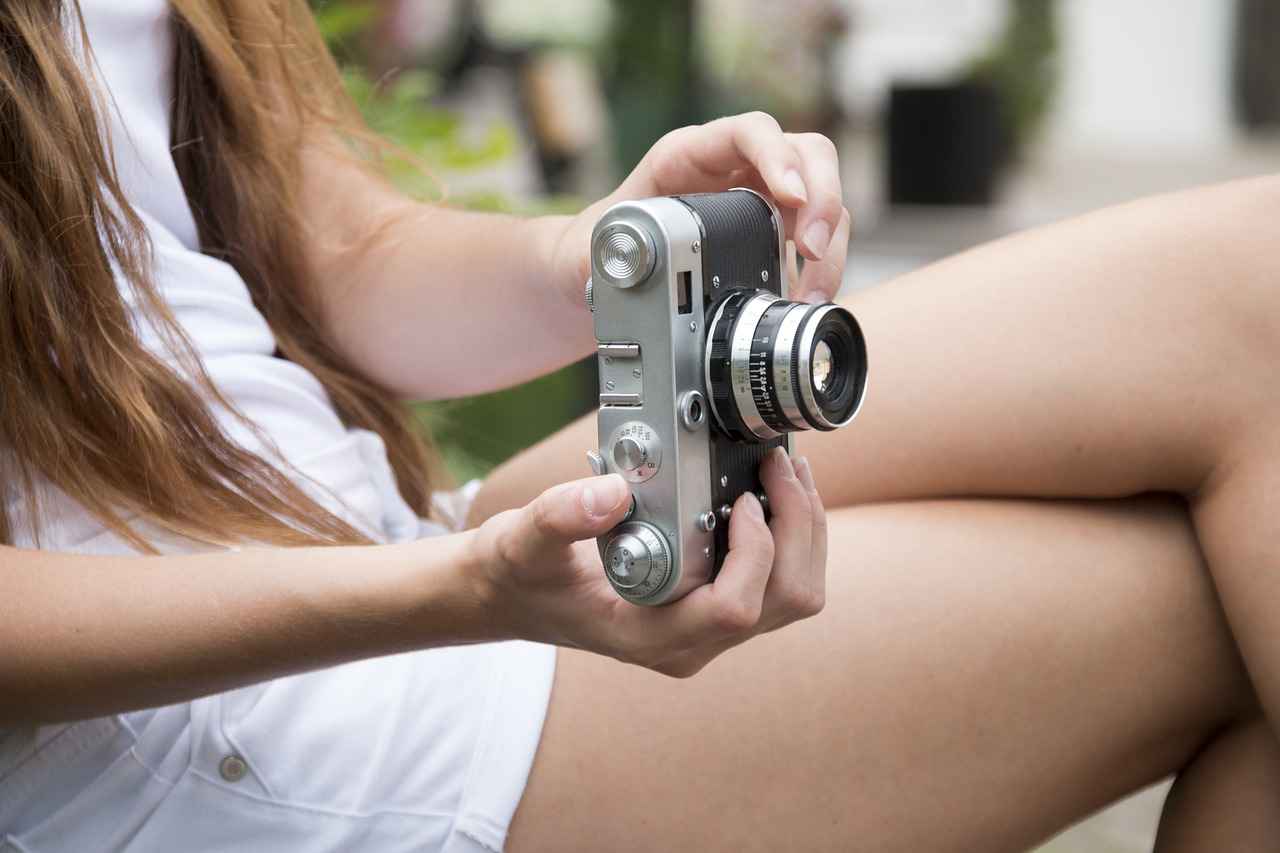
What Are the Limitations of Using Action Cameras?
When it comes to adventure filmmaking, action cameras have gained significant traction due to their compact size, durability, and ease of use. However, it is essential to acknowledge that these devices come with certain limitations that filmmakers should consider. Understanding these drawbacks can help you make informed decisions based on your specific shooting requirements and conditions.
- Battery Life: One of the most significant limitations of action cameras is their battery life. While many models offer decent performance, they often fall short compared to traditional cameras. Filmmakers shooting in remote locations may find themselves needing extra batteries or portable charging solutions to ensure uninterrupted filming.
- Sensor Size: The sensor size in action cameras is typically smaller than that of DSLRs, which can affect image quality, particularly in low-light conditions. Smaller sensors may struggle with dynamic range and noise levels, leading to less detailed images compared to larger sensor counterparts.
- Limited Manual Controls: While action cameras are designed for simplicity, this can sometimes mean fewer manual controls for advanced users. Filmmakers who prefer to fine-tune settings like exposure, ISO, and shutter speed may find action cameras lacking in this area, which could impact the creative process.
- Audio Quality: The built-in microphones on most action cameras are often not sufficient for professional audio capture. For filmmakers aiming for high-quality sound, external microphones may be necessary, adding complexity to the setup and increasing the overall weight.
- Field of View: Action cameras typically have a wide field of view, which can be a double-edged sword. While this feature is excellent for capturing immersive shots, it can also lead to distortion, especially at the edges of the frame. This distortion may not be suitable for all types of filmmaking.
- Storage Capacity: High-resolution video recording can consume storage space rapidly. Filmmakers must ensure they have adequate memory cards, and managing data can become cumbersome, especially when shooting long sequences.
Despite these limitations, action cameras have proven to be invaluable tools for adventure filmmakers. They excel in capturing unique angles and dynamic movements that larger cameras may struggle with. By understanding the limitations, filmmakers can strategically incorporate action cameras into their workflows, ensuring they complement their primary equipment rather than replace it.
In conclusion, while action cameras offer numerous advantages for adventure filmmaking, being aware of their limitations is crucial. By balancing the strengths and weaknesses of these devices, filmmakers can enhance their storytelling capabilities and create compelling visual narratives.
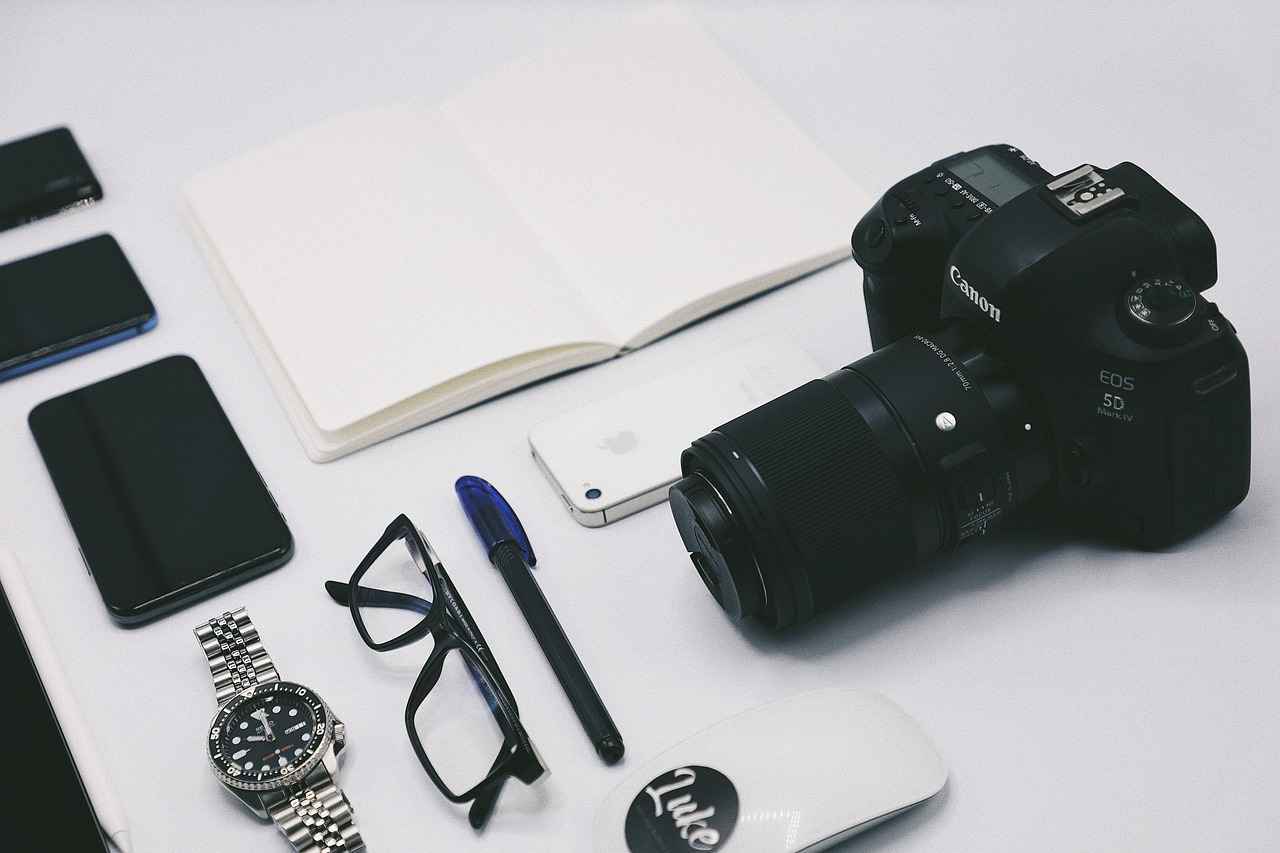
What Is the Future of Action Cameras in Filmmaking?
As the world of filmmaking continues to innovate, action cameras are poised to play an increasingly significant role in shaping the future of visual storytelling. These compact devices are evolving rapidly, integrating cutting-edge technology that enhances their functionality and versatility, making them indispensable tools for filmmakers, especially in adventure genres.
With the relentless pace of technological advancements, action cameras are expected to incorporate features that were once exclusive to higher-end equipment. For instance, improvements in sensor technology may lead to better low-light performance, enabling filmmakers to capture stunning visuals even in challenging lighting conditions. Furthermore, the integration of artificial intelligence could streamline the editing process, allowing for real-time adjustments and enhancements during filming.
The future of action cameras holds exciting possibilities for filmmakers. As these devices become more advanced, they will offer new creative opportunities for capturing unique perspectives and immersive experiences. For instance, filmmakers may utilize 360-degree video capabilities to create interactive content that engages audiences in unprecedented ways. This technology could transform how stories are told, allowing viewers to experience adventures from multiple angles.
As action cameras evolve, they are likely to close the gap with traditional DSLRs in terms of image quality and versatility. With advancements in image stabilization and higher resolution capabilities, filmmakers can expect action cameras to produce footage that meets professional standards. This shift may encourage more filmmakers to embrace action cameras as primary tools for their projects, particularly in dynamic environments.
Future action camera models are expected to enhance user experience through improved interfaces and connectivity features. With seamless integration into smartphone apps, filmmakers will have the ability to control their cameras remotely, view live feeds, and make real-time adjustments. This level of control will empower filmmakers to focus on creativity without being hindered by technical limitations.
As the demand for authentic and engaging content grows, action cameras will continue to play a vital role in storytelling. Their ability to capture high-energy activities in challenging environments makes them ideal for adventure filmmakers. By allowing for unique angles and perspectives, these cameras can enhance the narrative, providing audiences with an immersive experience that traditional filming methods may not achieve.
The future of action cameras will undoubtedly involve adapting to the evolving needs of filmmakers. As trends in content consumption shift towards short-form videos and social media platforms, action cameras will likely incorporate features that cater to these formats, such as enhanced editing tools and direct sharing capabilities. This adaptability will ensure that action cameras remain relevant and valuable in the ever-changing landscape of filmmaking.
As action cameras gain popularity, the market for accessories will expand, offering filmmakers more options to enhance their shooting capabilities. From advanced mounts to improved lighting solutions, the availability of innovative accessories will allow filmmakers to customize their setups according to their specific needs and shooting conditions. This flexibility will further solidify action cameras as essential tools for adventure filmmaking.
In summary, the future of action cameras in filmmaking looks promising, with advancements in technology paving the way for new creative opportunities. As these devices continue to evolve, they will not only enhance the filmmaking process but also reshape the way stories are told, making them invaluable assets for filmmakers worldwide.
Frequently Asked Questions
- Why should I choose an action camera over a DSLR for adventure filmmaking?
Action cameras are compact and lightweight, making them easier to carry during high-energy activities. Their rugged design ensures they can withstand tough environments, which is essential for adventure filmmakers.
- What features make modern action cameras suitable for professional use?
Today’s action cameras offer high-resolution video, advanced stabilization technology, and various shooting modes. These features allow filmmakers to capture stunning footage that meets professional standards.
- Can I achieve good image quality with an action camera?
Absolutely! While DSLRs have been known for superior image quality, advancements in action camera technology have significantly closed this gap, allowing them to produce high-quality footage.
- How do action cameras handle stabilization during filming?
Many action cameras come equipped with electronic image stabilization (EIS), which reduces shaky footage, ensuring smooth and professional-looking results even in fast-paced scenarios.
- What should I consider when choosing an action camera?
Look for features like video resolution, battery life, durability, and compatibility with accessories. Brands like GoPro, DJI, and Insta360 offer options tailored for different filming styles.
